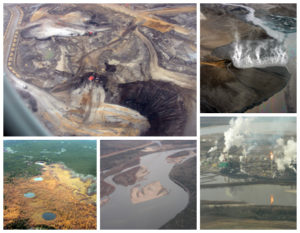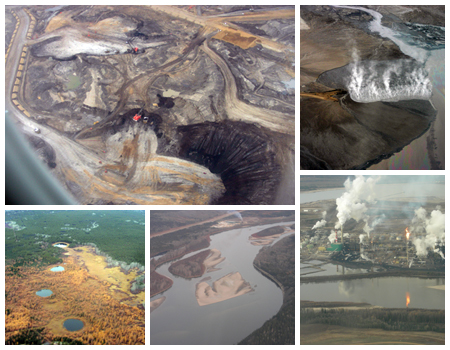In what has been called a “symbolic vote,” on June 19 the Senate Energy and Natural Resources Committee passed a bill approving the Keystone XL Pipeline. However, the bill has almost no chance of moving forward for a vote.
The bill, which was co-sponsored by Senators Mary Landrieu (D-LA) and John Hoeven (R-ND), passed the committee with bipartisan support with a 12-10 vote. If approved by Congress, the bill would bypass President Obama and would allow construction to begin without his signature.
But Senate Majority Leader Harry Reid (D-NV) will likely not bring the bill up for a vote. His stance against the pipeline has been well documented. And Obama recently announced that he would postpone any decision by the administration until after the November elections.

Photo collage of Alberta tar sands courtesy of User: Jungbim/Wikimedia Commons/CC-BY-SA-3.0 (work unmodified).
The complete Keystone Pipeline system would be extensive, transporting 800,000 barrels every day from Alberta, Canada south for thousands of miles to the Gulf Coast. Environmentalists see the pipeline as a hazard and one more way the United States is continuing to rely on fossil fuels instead of working to produce more energy through renewable resources.
While TransCanada’s Keystone XL Pipeline will likely not move forward in the near future, on June 17 Canada approved a different pipeline, Enbridge Inc.’s Northern Gateway. The proposed project will deliver more than a half million barrels of oil every day from the Alberta tar sands to the coast of British Columbia, where it will be shipped to Asia. Like the Keystone Pipeline project in the states, environmentalists protested the Northern Gateway on fears of a spill that could do serious damage to the area and affect tourism.
To satisfy safety and environmental concerns, the Northern Gateway will need to meet over 100 conditions imposed by regulators before it can be built. Some expect the requirements to delay construction for as much as 4 years. As for the Keystone XL Pipeline, a decision by either Congress or the administration is several months away.
To stay up to date on the Keystone XL Pipeline and the Northern Gateway Pipeline, follow us on Facebook, Twitter, and LinkedIn.






Recent Comments